Near field measurements of a magnetic loop
and investigation of possible health hazards
Magnetic loops can produce strong RF fields which are mostly
magnetic (H-field) when close to the antenna. Also, this type of
antenna is always close to the ground, where people might be
present. This could lead to health issues. In the European Union
fields should be lower than about 0.16 A/m (Ampere
per meter) to be safe for frequencies between 10 and 400 Mhz. In
order to measure the magnetic component of the electromagnetic
field, you need an H-field probe. I recently got access to a Narda
NIM-511 industrial field meter which can measure both E- and
H-fields up to 100 MHz. So I build a magnetic loop for 14 Mhz with a
1 meter diameter using a vacuum capacitor and about 3 meters of
rigid coaxial cable.
The setup below is not ideal since measurements where done near
metallic objects which causes reflections. But I did not have access
to a measurement chamber and could not take my equipment into the
field. These measurements will still produce fairly reliable numbers
as reflections quickly damp out and I always measured close to the
loop. The transmitter I have been using is a Yeasu FT-857 with 10
Watts output.
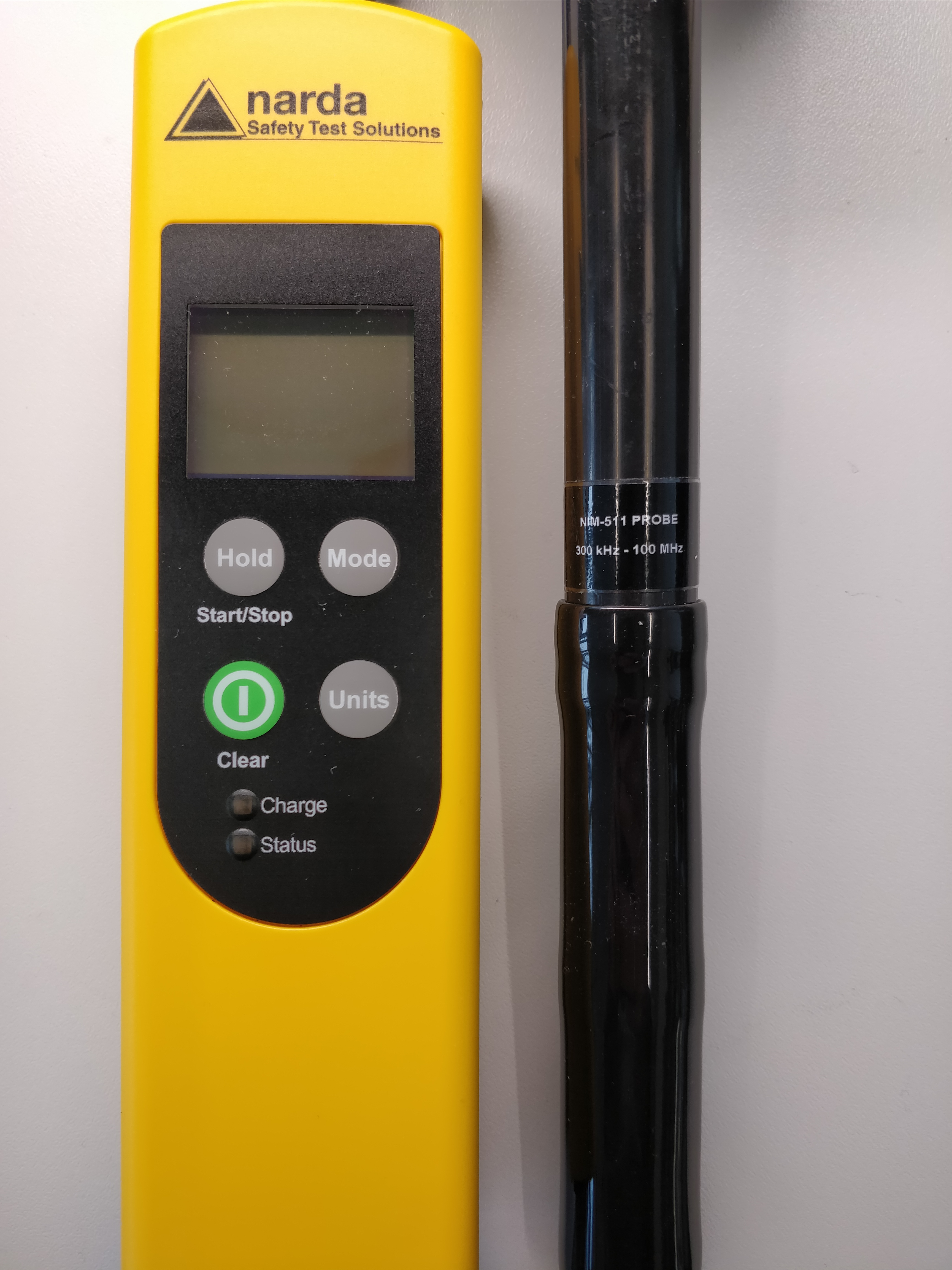
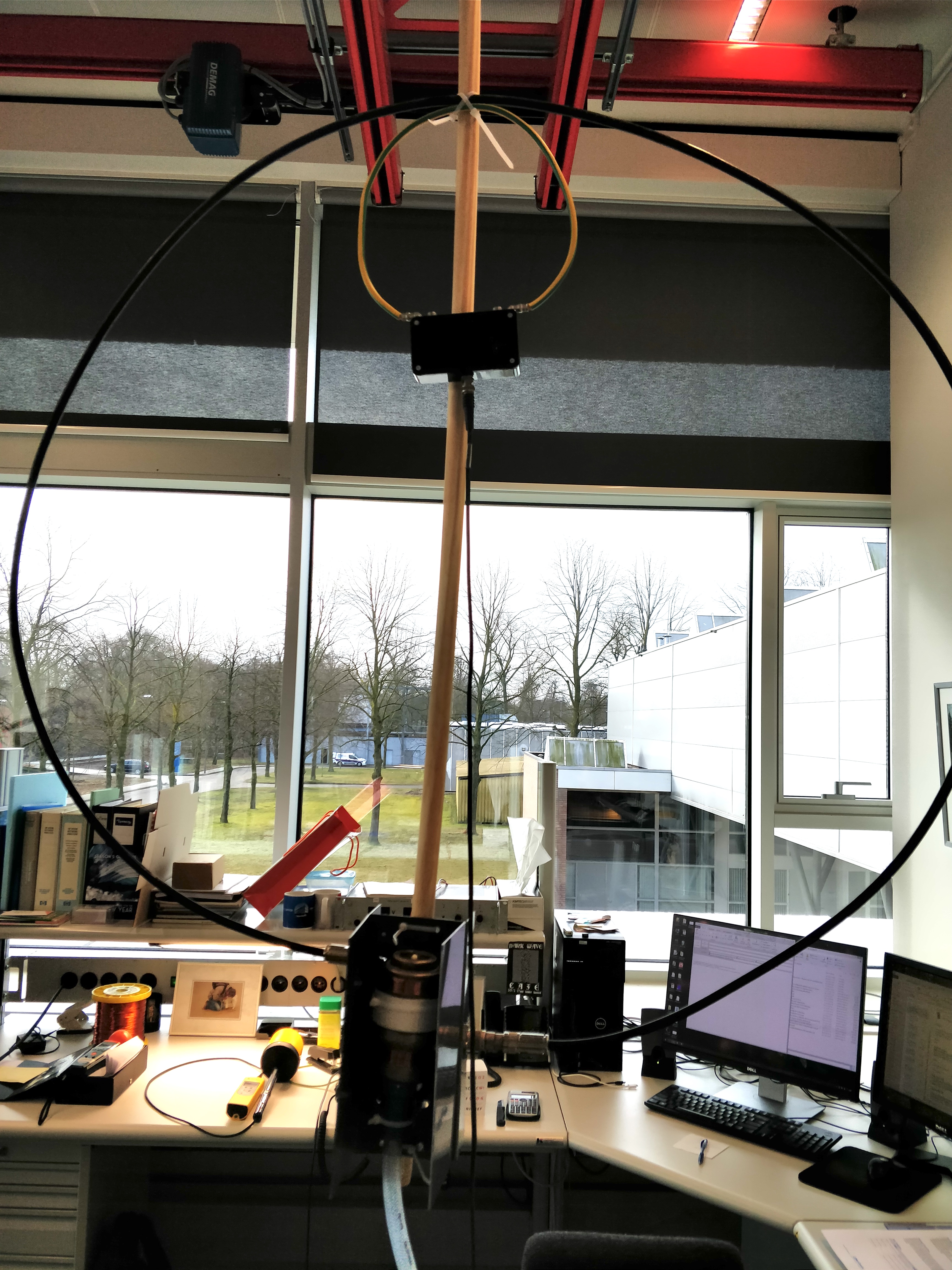
The purpose here is to compare measurements to simulations in 4NEC2
and then scale the simulations to higher outputs. I first calculated
the efficiency of the loop with the spreadsheet designed by
AA5TB, being around 50%. In 4NEC2 I made sure that power
output to the loop would always be the same as in real life. The
magnetic loop model I used for 4NEC2 has been developed by KP4MD.
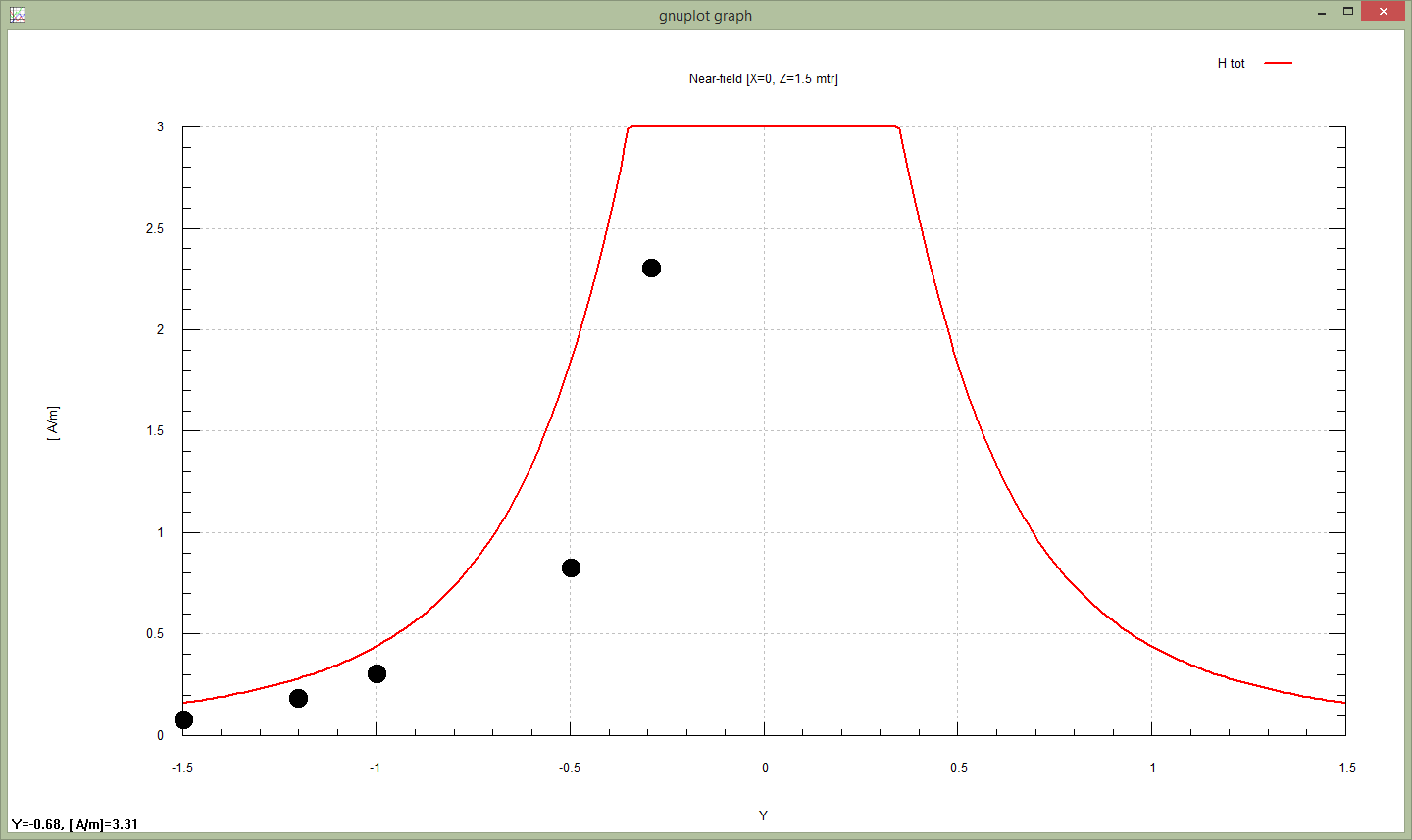
Figure 1: simulated (red line) and measured (black dots)
H-field in the center of the loop, perpendicular to the antenna.
Measurements done at 0.3, 0.5, 1, 1.2 and 1.5 meters distance from
the loop. 10 Watt power.
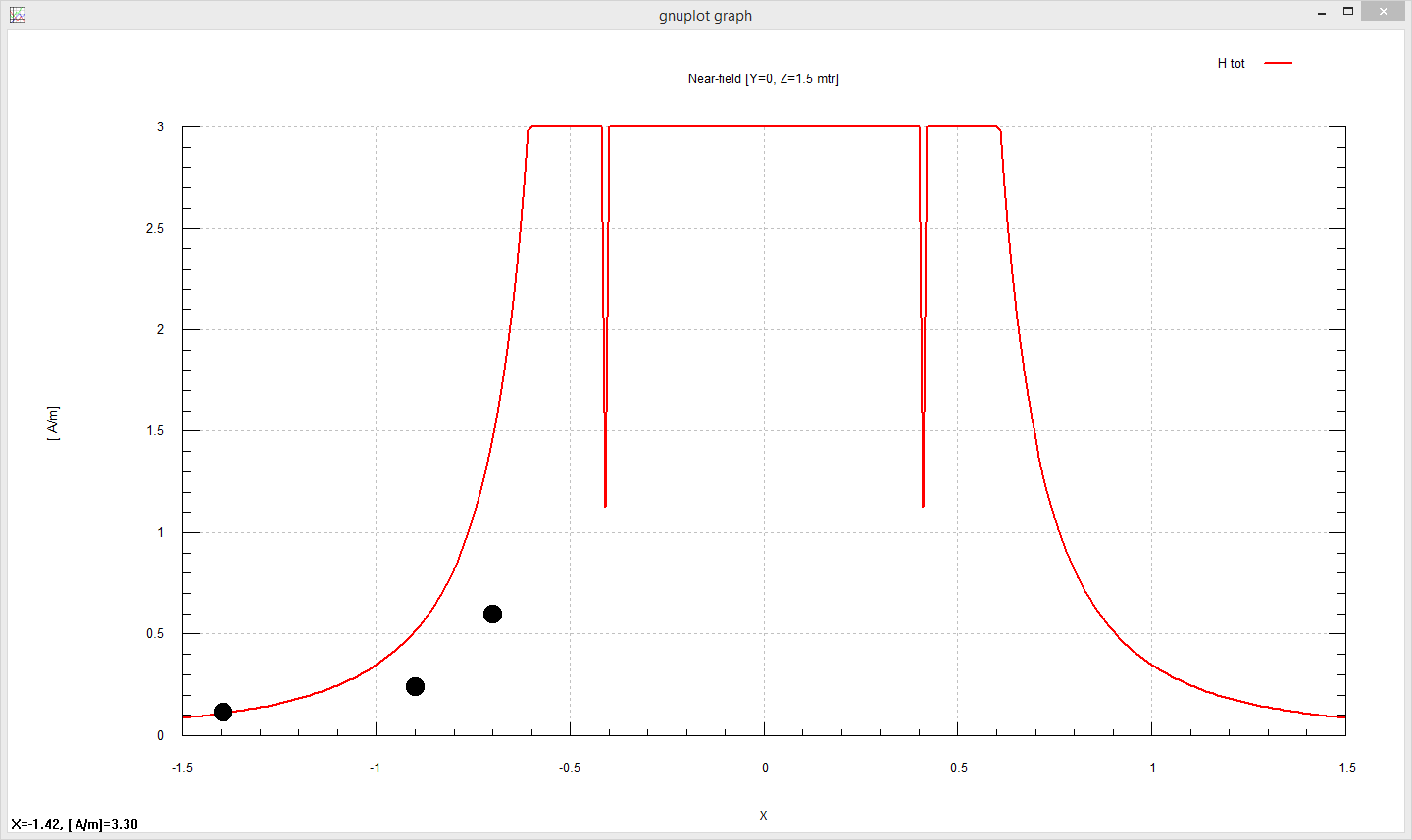
Figure 2: simulated (red line) and measured (black dots)
H-field in the center of the loop, in the plane of the antenna.
Measurements done at 0.3, 0.5 and 1 meters distance from the loop.
10 Watt power.
Simulations with 10 Watts produce a field strength which is about 2
times higher at some distances compared to the measurements, but
both the measurements and simulations indicate that unsafe fields
are generated close to the loop. Even with only 10 Watts into the
loop a distance of at least 1.5 meters should be maintained. But it
can get worse, let's look what happens with 100 Watts into the loop.
This time simulations only.
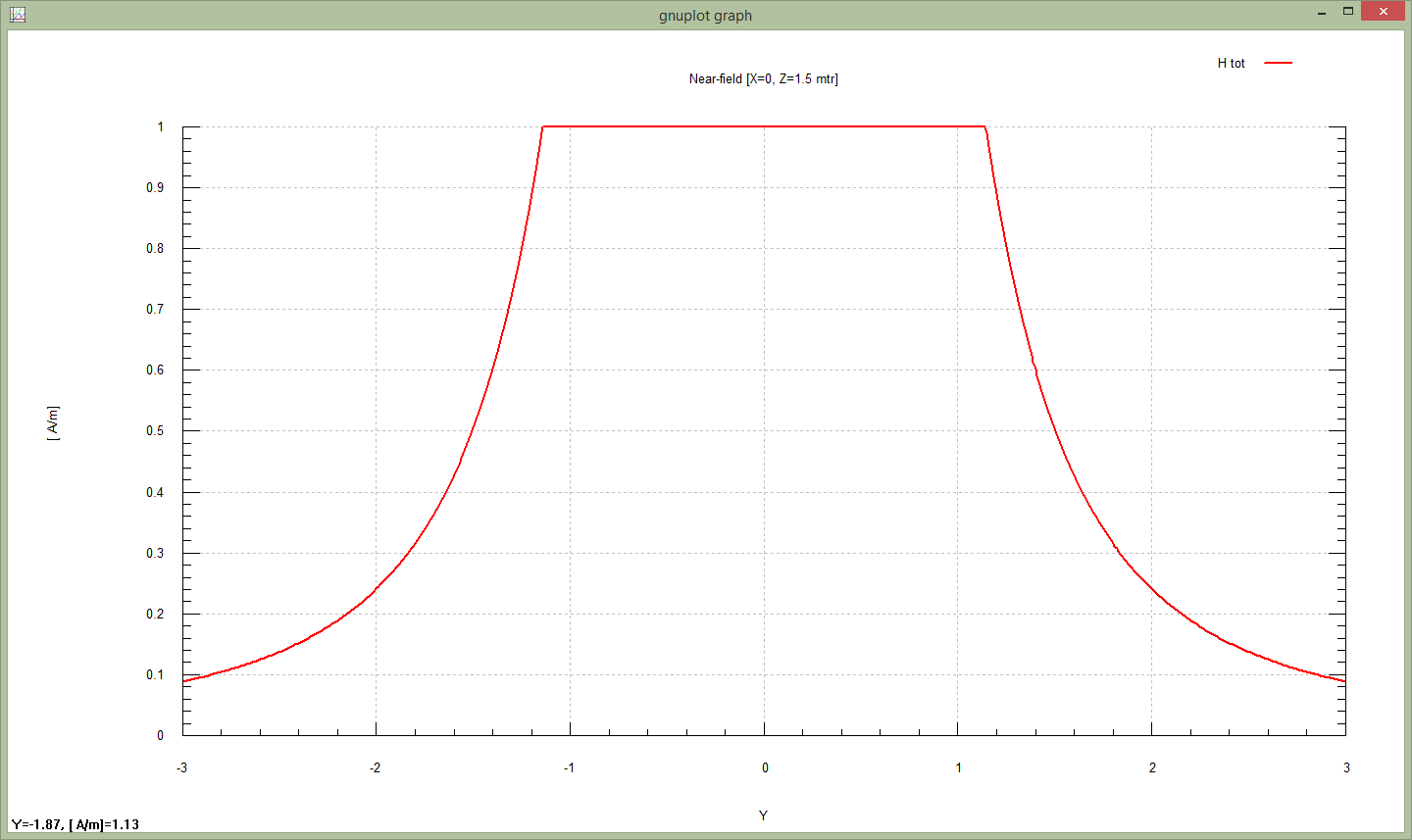
Figure 3: simulated H-field in the center of the loop,
perpendicular to the antenna. 100 Watt power.
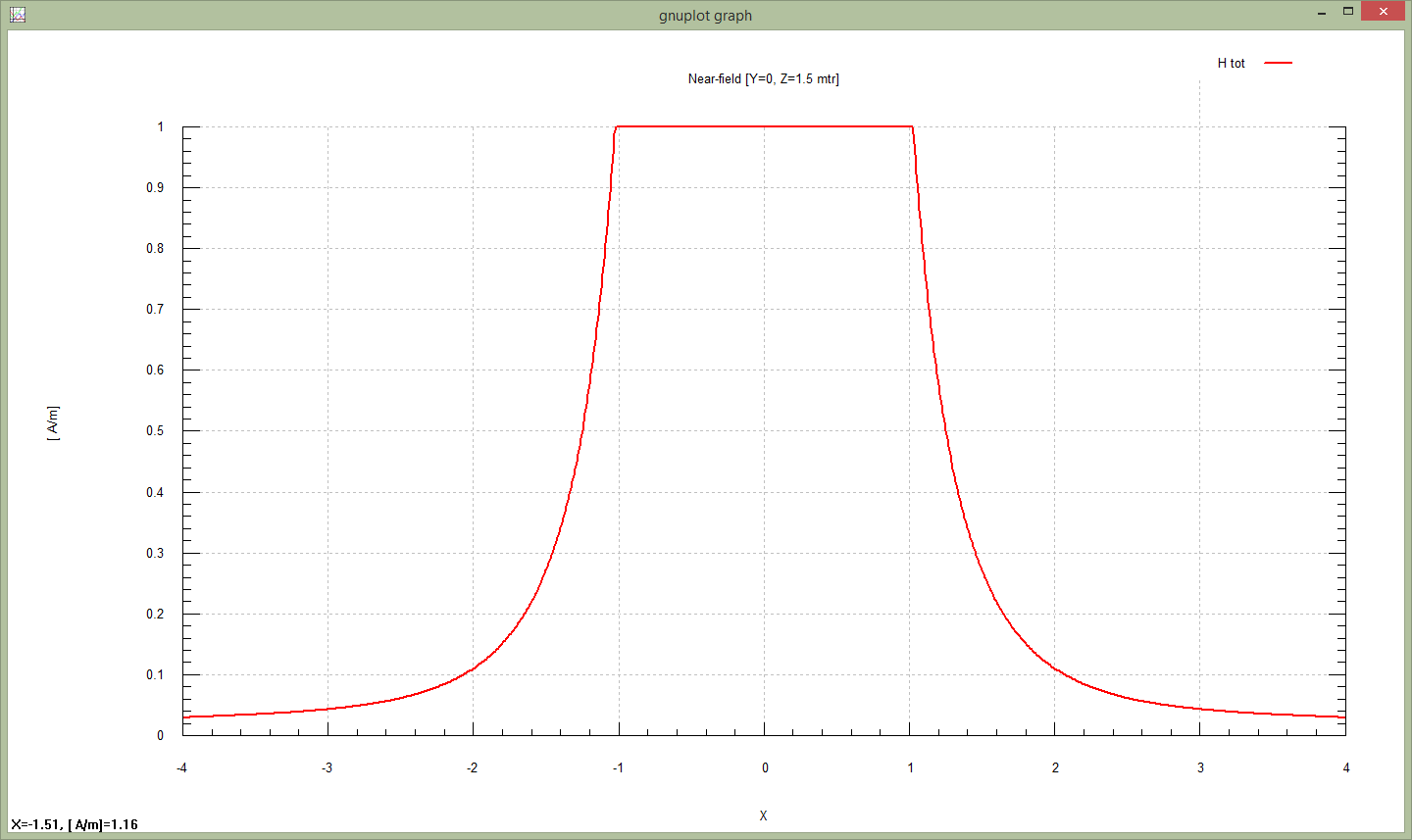
Figure 4: simulated H-field in the center of the loop, in the
plane of the antenna. 100 Watt power.
Of course fields are getting more serious now. When using 100 Watts
into a magnetic loop I would recommend keeping a distance of at
least 3-4 meters.

